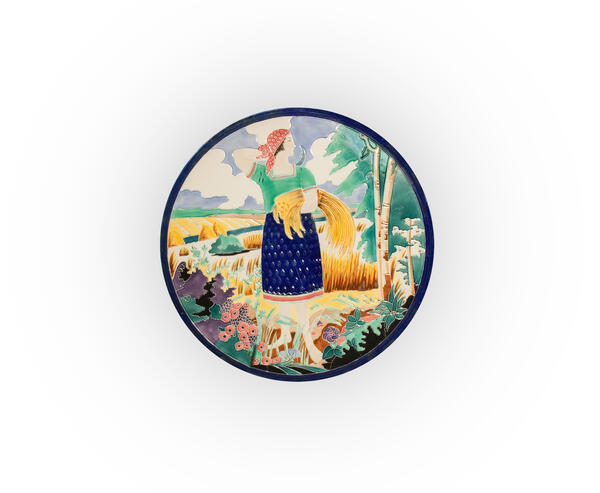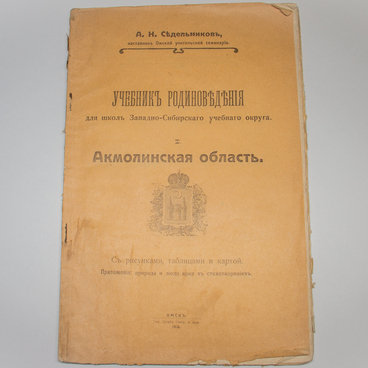The decorative plate ‘Reaper’ displayed at the ‘Peter the Great’s Siberian City’ exhibition depicts a peasant woman who holds a sheaf of wheat and a sickle. The plate was produced in Konakovo at the Faience Factory named after Kalinin in the 1930s. Before the Russian Revolution, the factory belonged to Matvey Sidorovich Kuznetsov, one of the largest producers of porcelain and faience in the Russian Empire. He was called “the king of Russian porcelain.” After the Revolution of 1917, the factory was nationalized. The decorative plate “Reaper” was brought to Omsk by a family of railway workers, who had come there in 1916 from Harbin.
Unbelievably, but that was porcelain and faience that became the voice of the October revolution and the powerful way of proletarian propaganda. The first porcelain with propaganda images appeared in Soviet Russia in 1918, and by 1920, it became a profitable item of income. In the fall of 1918, the special commission chose 28 slogans for using in all types and genres of art with the approval of Vladimir Ilyich Lenin, for example: “There will be no end to the kingdom of workers and peasants, ” “Who is not with us is against us, ” and others. At first, the porcelain was produced with slogans, but then the masters started to develop more complex images of Soviet heraldry and genre pictures.
Because of the 1932 resolution of the Central committee of the Communist party, all art movements were considered anti-Soviet. Only one official state genre remained: socialist realism. The art pieces were to educate Soviet people in the spirit of communism. From the end of the 1920s, the Soviet Union pursued a policy of industrialization and collectivization. In the 1930s, the main theme in the decoration of porcelain was labor — female workers in headscarves, male workers with hammers, tractors, machines. “Peasant porcelain” was also a movement, where the emphasis was placed on the everyday life of rural toilers. Such pictures aimed to popularize the peasant labor at collective farms and created a positive image of the government policy.
Unbelievably, but that was porcelain and faience that became the voice of the October revolution and the powerful way of proletarian propaganda. The first porcelain with propaganda images appeared in Soviet Russia in 1918, and by 1920, it became a profitable item of income. In the fall of 1918, the special commission chose 28 slogans for using in all types and genres of art with the approval of Vladimir Ilyich Lenin, for example: “There will be no end to the kingdom of workers and peasants, ” “Who is not with us is against us, ” and others. At first, the porcelain was produced with slogans, but then the masters started to develop more complex images of Soviet heraldry and genre pictures.
Because of the 1932 resolution of the Central committee of the Communist party, all art movements were considered anti-Soviet. Only one official state genre remained: socialist realism. The art pieces were to educate Soviet people in the spirit of communism. From the end of the 1920s, the Soviet Union pursued a policy of industrialization and collectivization. In the 1930s, the main theme in the decoration of porcelain was labor — female workers in headscarves, male workers with hammers, tractors, machines. “Peasant porcelain” was also a movement, where the emphasis was placed on the everyday life of rural toilers. Such pictures aimed to popularize the peasant labor at collective farms and created a positive image of the government policy.



